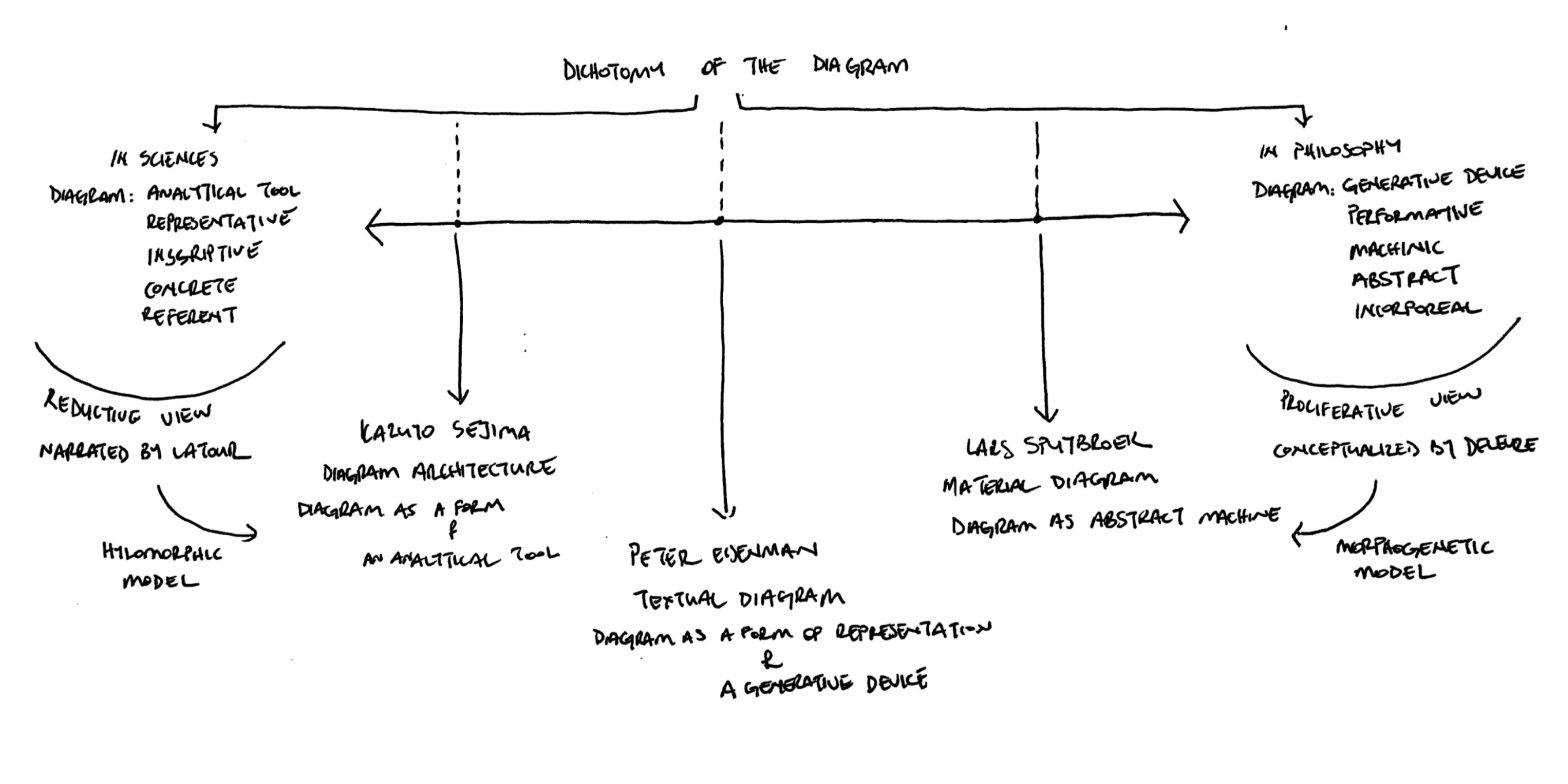The Diagram in Continuum: from Inscription to Generation of Form in Architecture
Paper Presented at ARCC-EAAE International Conference in Philadelphia in May 2018.
Hayri Dortdivanlioglu, “The Diagram in Continuum: From Inscription to Generation of Form in Architecture”, Shaping the Quality of Life Volume II, ed. Wingert-Playdon K. and Rashed-Ali H., 254-263. 2018.
The modern concept of the diagram has evolved in various disciplines and professions in terms of both inscriptive and performative mediums since the 1950’s. As a powerful abstract concept, the diagram shows dichotomous characteristics; while the inscriptive mode of the diagram is seen as representational, concrete, and reductive, the performative mode of the diagram is seen as generative, abstract, and proliferative. This paper compares the production and the role of the diagram respectively in representative and generative mediums to give an insight into how diagrams embody these dichotomous modes. To do so, first, it studies the concept of the diagram in the works of two French philosophers: Bruno Latour and Gilles Deleuze.
![The diagram of the dichotomy and in-between positions]() Figure 1: The diagram of the dichotomy of diagrammatic views and in-between positions.
Figure 1: The diagram of the dichotomy of diagrammatic views and in-between positions.
On the one hand, for Latour, the inscriptive aspect of the diagram becomes prominent as a tool to render scientific processes or objects onto an abstract representation, which acts as a concrete, irrefutable, and referential object. On the other hand, the Deleuzian concept of the diagram is not representational or visual at all, but it is still real. According to Deleuze, diagrams are sets of relations of forces that define virtuality of assemblages as a space of possibilities. The modern concept of diagrams in the realm of architecture has evolved in between this dichotomy.
After giving insights into the contrasting concepts of the diagram, this paper studies three different approaches to the diagram in architectural praxes: Analytical diagram in Sejima’s works, textual diagram in Eisenman’s works, and material diagram in Spuybroek’s works. This paper identifies these three praxes as intermediary stages in between Latour’s and Deleuze’s concepts of the diagram. In conclusion, it shows the dichotomy of the diagram as a continuum in architectural praxes, characterized at one end by the inscriptive mode and at the other end by the performative mode of the diagram.
 Figure 1: The diagram of the dichotomy of diagrammatic views and in-between positions.
Figure 1: The diagram of the dichotomy of diagrammatic views and in-between positions.On the one hand, for Latour, the inscriptive aspect of the diagram becomes prominent as a tool to render scientific processes or objects onto an abstract representation, which acts as a concrete, irrefutable, and referential object. On the other hand, the Deleuzian concept of the diagram is not representational or visual at all, but it is still real. According to Deleuze, diagrams are sets of relations of forces that define virtuality of assemblages as a space of possibilities. The modern concept of diagrams in the realm of architecture has evolved in between this dichotomy.
After giving insights into the contrasting concepts of the diagram, this paper studies three different approaches to the diagram in architectural praxes: Analytical diagram in Sejima’s works, textual diagram in Eisenman’s works, and material diagram in Spuybroek’s works. This paper identifies these three praxes as intermediary stages in between Latour’s and Deleuze’s concepts of the diagram. In conclusion, it shows the dichotomy of the diagram as a continuum in architectural praxes, characterized at one end by the inscriptive mode and at the other end by the performative mode of the diagram.